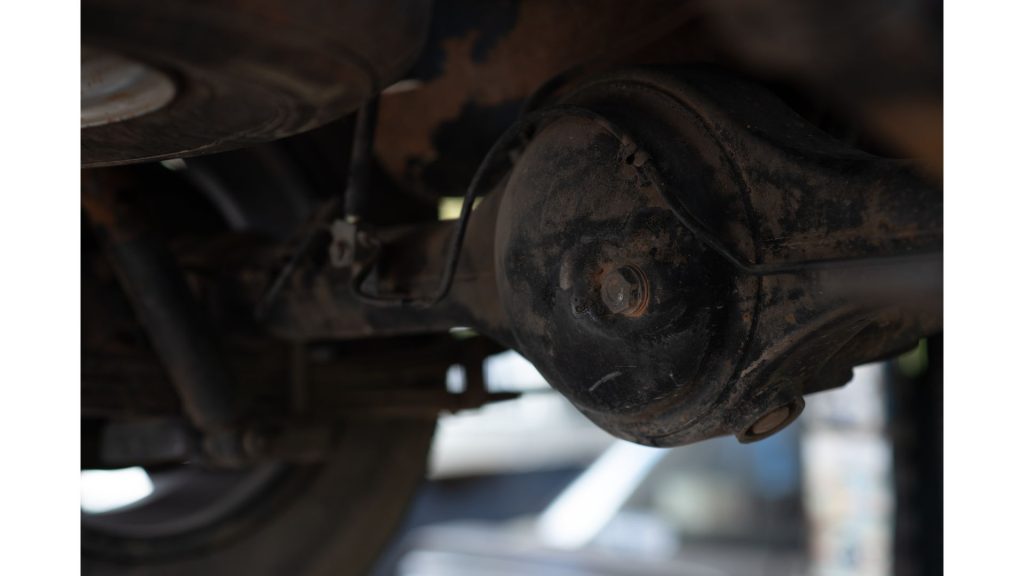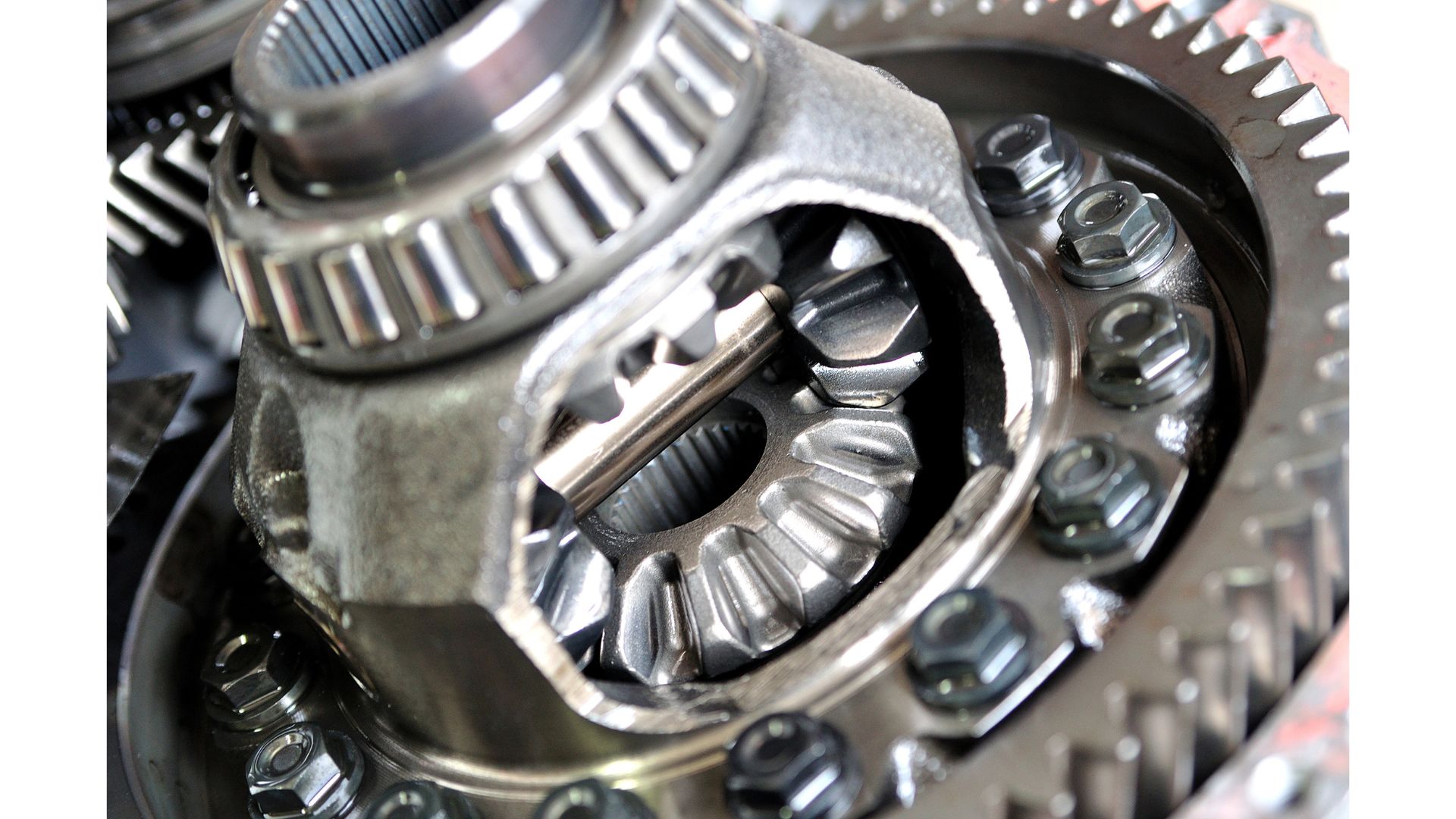Every car has a differential of one sort or another. But what does this component do? This is what you should know:
The differential is a set of gears. It is essential to the vehicle’s operations because it moves the power from the engine to the wheels, which, in turn, allows you to turn the car.
The differential operations are vital because your wheels turn at a different pace. Don’t forget that the outer wheel travels along a longer arc when you steer around a corner. Therefore, the outer wheel moves faster to balance the car’s movements.
The role the differential plays will vary slightly depending on the vehicle type. You’ve heard of 2WD and 4WD, but what sets them apart, and how do they differ from All-Wheel Drive cars? The answers to those questions will tell you what to expect from your differential.
2WD VS 4WD VS AWD
- Two-wheel drive cars include front and rear-wheel-drive models.
- With the front-wheel-drive option, the two front wheels steer the car. You see these vehicles in developing nations because they are cheaper to make and buy.
- Rear-wheel-drive vehicles are exactly what you think. The two rear wheels control the car. Even though they are more expensive than their front-wheel-drive counterparts, people buy them because of the enhanced speed and handling they offer.
- Four-wheel drive vehicles use all four wheels. This allows the cars to traverse rough terrain.
- Some 4WDs allow the driver to switch between 2WD and 4WD. Experts call them ‘Part-Time 4WD.’ You only engage the 4WD mechanism when you need it. This gives you additional traction on challenging roads. Full-time 4WDs use all four wheels all the time.
- All-wheel-drive vehicles are confusing because they sound like 4WDs. They use all four wheels simultaneously. However, unlike full-time 4WDs, you can drive AWD vehicles on normal roads. But you shouldn’t expose them to extremely tough terrain. Restrict these vehicles to mildly challenging off-road environments. They can’t match the clearance you find in 4WDs.
Where Does The Front Differential Work?
- You find front differentials in front-wheel, four-wheel, and all-wheel-drive cars.
- You will find the front diff between the front axles in the center of the undercarriage for front-wheel-drive, and to the side of the engine and running to the front drive shaft for 4WDs.
- According to The Gearbox Factory, the diff is called the transaxle in front-wheel-drive vehicles.
- Rear-wheel-drive cars have a rear differential.
- 4WDs and AWDs have front and rear differentials, which explains the impressive traction you get from all four wheels.
If you have a 2WD with a front differential, your car is a front-wheel drive. The front diff will ensure that each of the front wheels and tires in your 2WD gets the correct amount of power to execute your commands.
Types of Differentials
Open Differential – This differential compensates for the loss of traction in one wheel by reducing the power in the other wheel. This allows the car to maintain some traction even when things go wrong. The open differential is not as common because superior options with higher performance have flooded the market.
Locking Differential – You find this differential in off-roaders. It can maintain the power in the wheels even when the tires lose traction. The diff won’t permit the wheels to spin at varying speeds. Off-roading enthusiasts appreciate it because it allows cars to crawl through muddy terrain.
Limited-Slip Differential – Your front-wheel-drive car may have a limited-slip differential. You find these components in 4WDs, AWDs, and front-wheel-drive vehicles. The diff automatically locks to maintain power and traction when a wheel slips. It benefits everyday driving scenarios.
Torque-Vectoring – This one doesn’t matter to you unless you have a high-end sports car. The mechanism uses various gears to customize the torque each wheel receives. This refines the car’s performance and handling.
Should The Front Differential Turn In 2WD?

The front driveshaft in a 2WD doesn’t rotate. This matters because the front shaft, transfer case, and front differential are disconnected from one another. Even though the front drive shaft doesn’t necessarily turn, it has the potential to turn, especially at high speeds. Or, at the very least, nothing will prevent it from turning.
It is worth noting that your situation may change the observations you make. For instance, contributors to this Navara forum expect the front axle and diff to turn when you move the car forward because the front hubs are always engaged.
Many Ranger Forums contributors will tell you that front axles and differentials (Live Axle) turn in both 2WD and 4WD when the car moves.
Difference Between 2WD and 4WD Front Differential Operations
The front differential plays a similar role in 2WDs and 4WDs. That includes:
- Transmitting the engine’s torque and power to the front wheels.
- Enhancing handling and keeping the car stable as it makes a turn.
- Distributing the torque unequally in the event of a slip (For limited slip differentials).
- Allowing the wheels to turn at a different pace.
4WDs have a rear and center differential (or a transfer case) because they use all four wheels. 2WDs rely on the two front tires to turn the car. They don’t need a rear differential.
Pros and Cons of Front Differential In 2WD Mode
Most front differentials offer the same benefits. That includes improving traction and allowing you to steer the car around corners. Differences only emerge when you look at the various types of differentials. For instance:
- While open differentials allow the wheels to run independently, you can’t trust them to maintain traction on uneven and slippery surfaces. The car won’t move if one of the tires is off the ground.
- A locking differential will allow your vehicle to tackle uneven off-road terrain. Unfortunately, the component’s operations are noisy, and you may ruin the driveline parts.
- The limited slip differential offers superior traction to its locking counterpart. You can make turns on slippery roads with greater ease. However, many limited slip differentials are delicate. They cannot withstand significant physical abuse.
Common Issues With Front Differential In 2WD Mode and How To Fix Them?
A front differential will let you know when it goes bad. You will observe one or more of the following symptoms:
- You go through too much oil, probably because it’s leaking. This is bad because it shows that your car’s differential has insufficient lubrication.
- The diff makes an annoying grinding sound.
- The tires wear out a little too quickly.
- The car vibrates when you accelerate.
- The car feels unstable when you turn.
But why would the front differential go bad? Some people ruin this component unintentionally:
- Some people drive badly. They strain the differential by driving too fast over a long duration.
- Some drivers cause the differential to overheat by towing heavy objects like boats.
- Some people allow their cars to spin out frequently.
- You can destroy this component by using the wrong lubricant.
- Water can make things worse by infiltrating the diff via the seals and vents whenever you drive through puddles.
A mechanic can rebuild the differential. This is where they take the component apart, identifying and replacing damaged gaskets, seals, and gears. However, depending on the severity of the damage, the mechanic may ask you to replace the differential.
FIXD expects consumers to pay as much as $4,000 for a new differential: $1,200 to $3,000 for labor and $800 to $1,000 for a new differential. If your mechanic charges by the hour, the labor fees will depend on how long the replacement takes. According to Wap Car, a decent mechanic can replace a front diff in three hours.
A bad differential is unlikely to kill you. Don’t expect the component to suddenly break while you drive. A defective differential will give you plenty of warning beforehand. The poor steering and loud noises will compel you to take action before the worst happens.
Front Differential Maintenance Tips For 2WD Mode
- Service your car routinely.
- If you drive through rough terrain, maintain high speeds for long periods, and tow heavy objects, make frequent visits to the mechanic to check the differential fluid.
- Change the differential fluid regularly.
- Investigate every oil leak you notice, especially when your car starts generating grinding sounds. Ask a professional to troubleshoot the issue before the lack of proper lubrication damages the differential permanently.
- Car treatments encourage consumers to use good quality diff fluid. Otherwise, the gears may overheat.

